This article includes documentation of the so-called “Star Eater” issue with certain Sony cameras and long exposures of the night sky.
Update October, 2020:
According to multiple sources, including this video from Alan Stankevitz, the Sony a7SIII exhibits noticeable star eating noise reduction in its video mode at ISOs of 102400 and higher.
Update December, 2018:
With the discovery of a workaround, and improvement in the noise reduction algorithm in the Sony Mark III Alpha cameras (a7III and a7RIII), I have updated the title of this post and I have appended the content of my workaround post and elements of my a7III review to show what users can expect from these cameras. I still recommend Sony cameras for astrophotography, especially the new a7III and I still use the original a7S as my primary astrophotography camera. Those interested or concerned about the issue can read about how to avoid it here.
Documentation of the Problem
In 2016, Sony purportedly made firmware changes to their two flagship a7 series cameras (the a7RII and a7SII). The update (believed to be 3.30 on the a7RII and 2.10 on the a7SII) was supposed to include improvements for radio controlled lighting and overall camera stability and temperature control. But hidden in these improvements is a change that affects the image quality when shooting long exposures, particularly astrophotos. The problem has been dubbed “Star Eater” by others in the astro community. The issue also affected, from day one, the original line of a7 cameras when used in Bulb mode and the problem persists through out Sony’s latest line of cameras including the a9 and a7RIII.
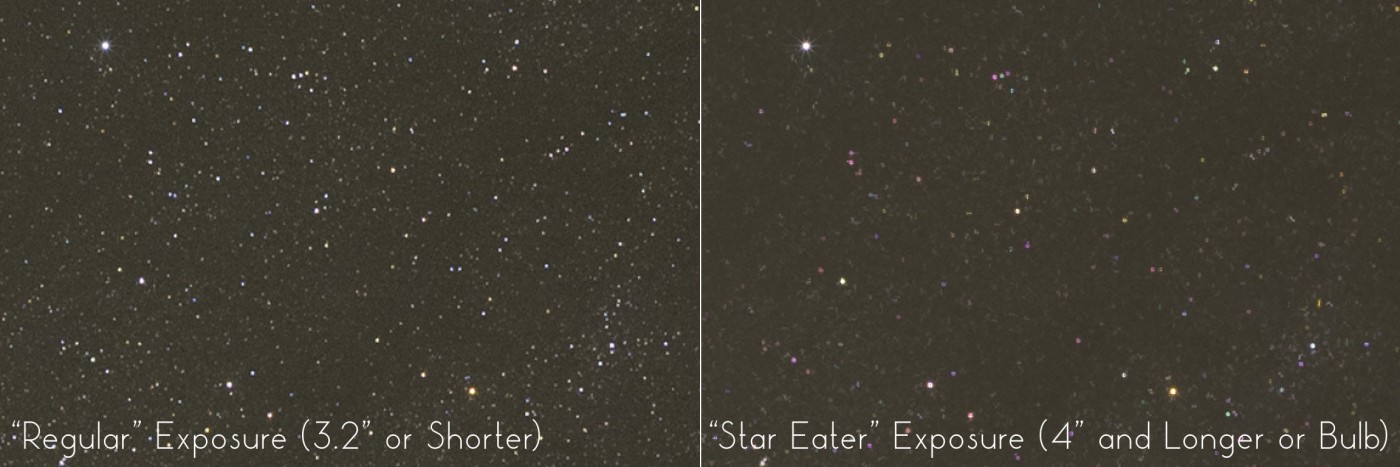
The “Star Eater” problem is a form of software spatial filtering designed to reduce noise in photos, particularly hot pixels. Unfortunately, the rather rudimentary filtering algorithm that Sony is using easily mistakes sharp pinpoint stars for noise, nearly deleting them from the image or greatly reducing their brightness. The result is an astrophoto with less stars and the appearance of diminished resolution. Sony a7RII, a7SII and a7RIII cameras exhibit this problem for all exposure times longer than 3.2″. Furthermore, the “Star Eater” issue affects RAW images (whether uncompressed or not) and cannot be disabled by any means. There are no user selectable settings that will prevent these cameras from eating stars.
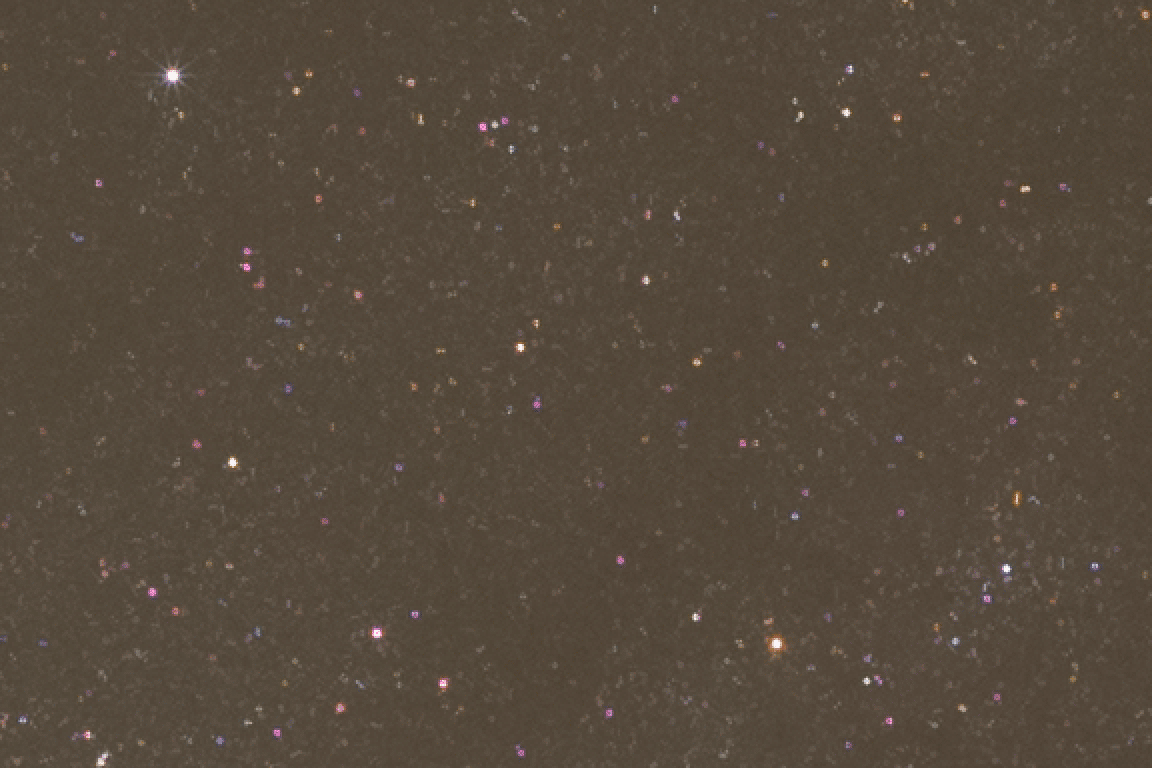
I have confirmed the issue myself and it has been discussed and analyzed many times on other places around the online photography community, particularly on the DPReview forums, Cloudy Nights, Jim Kasson’s Last Word, and more recently on Sony Alpha Rumors.
Bad spatial filtering isn’t new to Sony’s Alpha cameras. Even with the older firmware, all recent Sony alpha mirrorless cameras including the a6000, a6300, a6500, a7S, a7R, a7, a7II, a7SII and a7RII exhibit, in different ways, the “Star Eater” issue when using the Bulb exposure mode (my examples above are from the a7S in Bulb Mode). Untracked landscape astrophotography rarely requires exposures longer than 30″ so I found that the issue rarely affected my photography. (Most of my exposures are made between 5 and 20 seconds.)
The Workaround
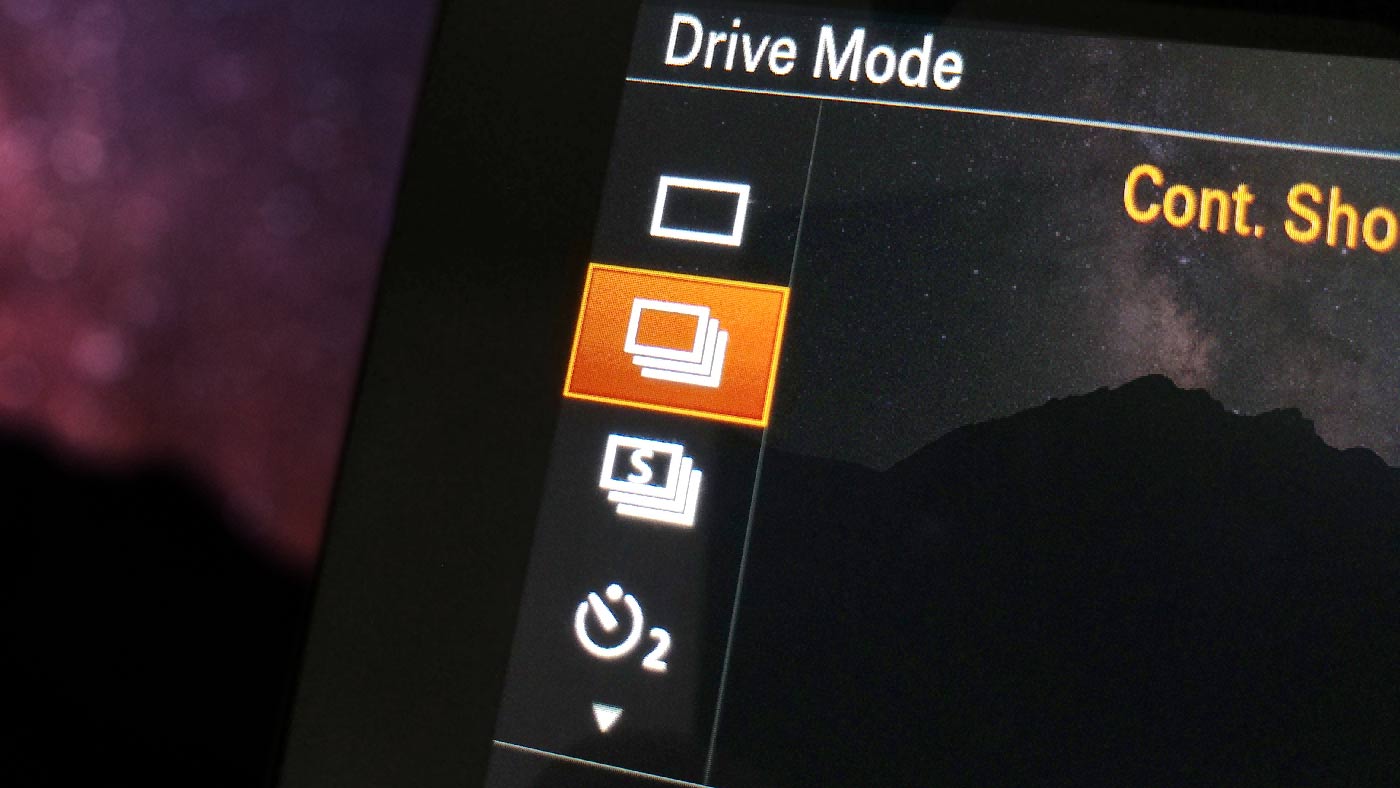
In a December 2017 post, Jim Kasson talked about a potential workaround on the a7RII. The fix is certainly counter-intuitive: enabling continuous drive mode while shooting long exposures. In his analysis, Jim shows that by enabling the continuous drive mode, the a7RII no longer exhibits the same behavior of the star-eating algorithm. Jim’s original analysis was only of the a7RII so I was curious to see if the same workaround would work on the a7SII. I had a friend supply some sample dark-frames from his a7SII and I took a close look at the files. Sure enough, enabling continuous mode seemed to prevent the star eater problem from occurring. I sent the frames to Jim for his final analysis of the a7SII star eater workaround which he has published here.
- So the good news: a7RII and a7SII users can circumvent the Sony star eater issue by shooting with continuous shutter mode enabled. Either regular “Continuous” or “Continuous Speed Priority” shutter modes will work.
- The bad news: by enabling continuous shutter mode, the color depth of the raw files is reduced to 12-bit. This means that the file is losing some dynamic range capability and may show some increase in noise. In all practicality, the results should be more desirable for astrophotography than the star-eaten files.
This workaround is a welcome find for owners of the a7RII and a7SII who enjoy shooting astrophotography but it’s still only a partial fix. Using the workaround, bit-depth is slightly reduced, limiting the dynamic range of the resulting photographs.
Should you care?
Maybe. I’ll admit that it is a problem that requires a fair bit of pixel peeping. Fellow landscape astrophotographer Michael Frye has made a great analysis of what you can expect from the a7RII. All told, some photographers might never even notice the issue. But as our community shifts more and more towards the enthusiast, to the photographer who really cares about the finest capability of their equipment, it’s an issue that I want to document.
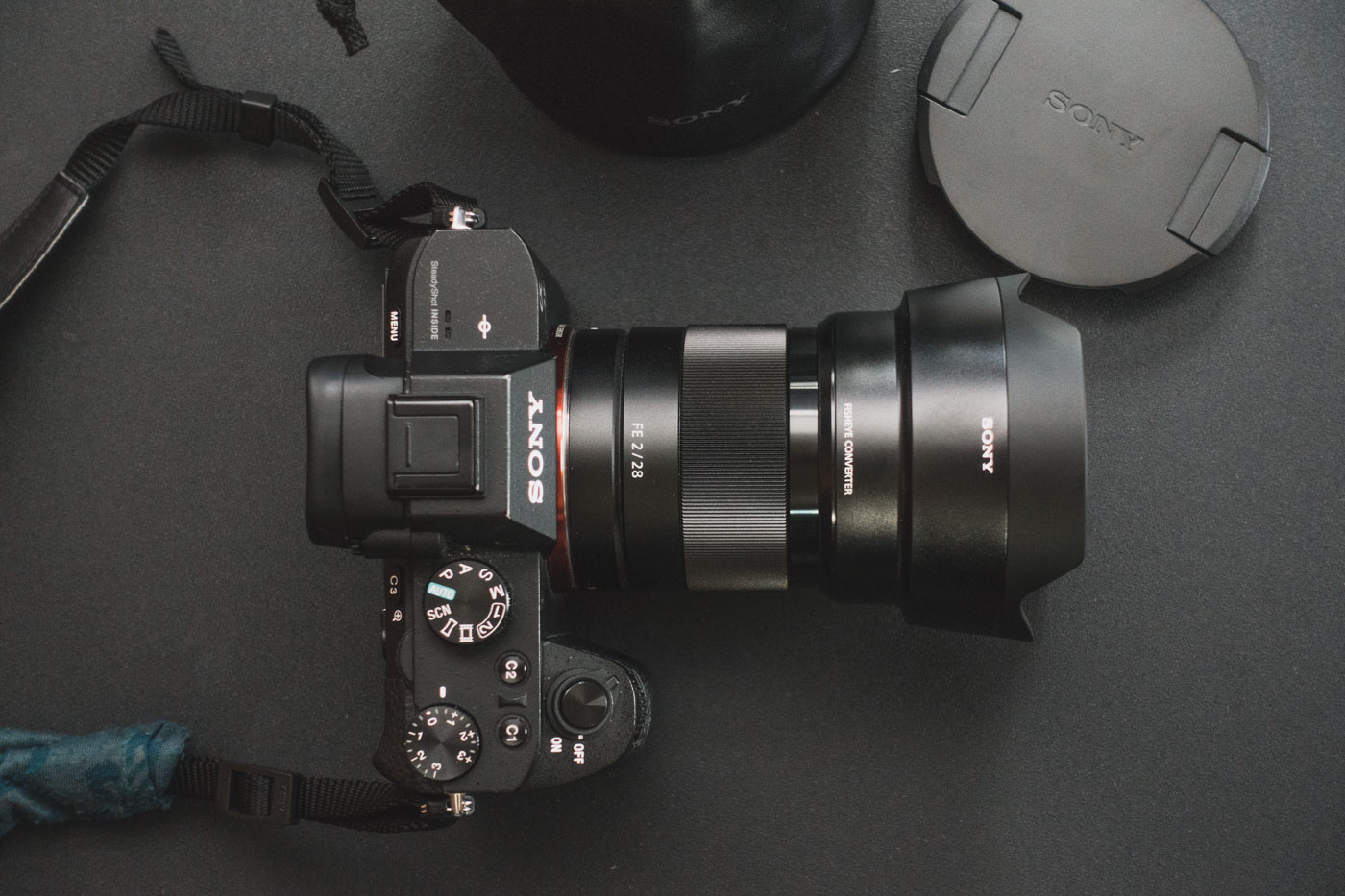
Without using the workaround, the a7SII in particular is affected very greatly by this issue because of its lower resolution sensor. It was a camera that launched with praise about its low light capability and now I highly discourage you use an a7SII for astrophotography. Want to know how each camera is affected by the issue? Here’s a summary of the differences between each camera and recommendations on how to deal with it:
- Sony a7
- Camera timed exposures up to 30s unaffected.
- Bulb exposures affected.
- Recommendation: Don’t shoot astrophotography with Bulb exposures.
- Sony a7R
- Camera timed exposures up to 30s unaffected.
- Bulb exposures affected.
- Recommendation: Don’t shoot astrophotography with Bulb exposures.
- This camera not recommended for tracked astrophotography.
- Sony a7S
- Camera timed exposures up to 30s unaffected.
- Bulb exposures affected.
- Because of the lower resolution sensor (12MP), star eater issue for Bulb exposures is significantly more apparent.
- Recommendation: Don’t shoot astrophotography with Bulb exposures.
- This camera not recommended for tracked astrophotography.
- Sony a7II
- Camera timed exposures up to 30s unaffected.
- Bulb exposures affected.
- Recommendation: Don’t shoot astrophotography with Bulb exposures.
- This camera not recommended for tracked astrophotography.
- Sony a7SII
- Camera timed exposures longer than 3.2s affected.
- Bulb exposures affected.
- Because of the lower resolution sensor (12MP), star eater issue is significantly more apparent.
- Recommendation: Use continuous shutter mode. Don’t shoot astrophotography with Bulb exposures.
- Sony a7RII
- Camera timed exposures longer than 3.2s affected.
- Bulb exposures affected.
- Continuous Low and High modes are a potential workaround, but with a reduction to 12-bit color depth.
- Recommendation: Use continuous shutter mode. The issue is mostly hidden by this camera’s higher resolution sensor. Don’t shoot astrophotography with Bulb exposures.
- Sony a9
- All timed exposures affected.
- Bulb exposures affected.
- Recommendation: Don’t shoot astrophotography with Bulb exposures. The issue can be partially hidden by this camera’s higher resolution sensor. Use longer than recommended exposure times to increase star trailing to reduce the effects of star eater.
- Sony a7RIII
- Camera timed exposures longer than 3.2s affected.
- Shows improvement over a7RII.
- Recommendation: The issue is mostly hidden by this camera’s higher resolution sensor. Use of long enough exposure times to increase star trailing will reduce the effects of star eater.
- Sony a7III
- Camera timed exposures longer than 3.2s affected.
- Shows improvement over previous generation
- Recommendation: The issue is mostly hidden by this camera’s higher resolution sensor and improved algorithm. Use of long enough exposure times to increase star trailing will reduce the effects of star eater.
Improvements in the Sony a7III
The below section is an excerpt from my a7III review.
The a7III exhibits a similar, but different characteristic noise filtering as previous generations. The filtering reduces noise and diminishes the brightness of small dim stars in an image for exposures of 4 seconds or longer. An easy way to see the effects of star-eater on the a7III is to simply compare a 3.2s exposure (left) with a 4s exposure (right):
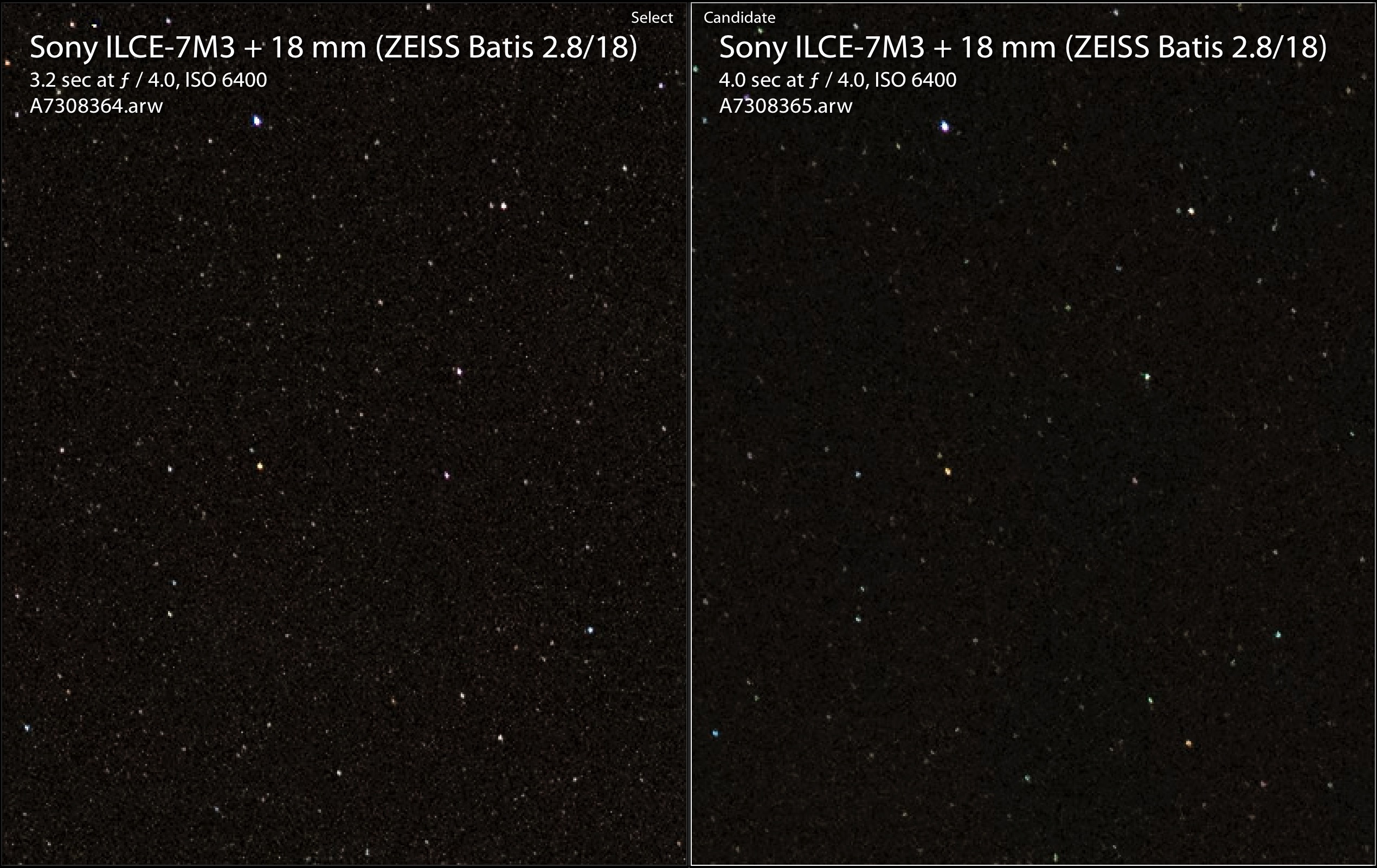
There’s definitely a difference in the 4 s exposure when compared to the 3.2 second exposure. At 4 seconds, noise is reduced dramatically and dim stars are further diminished in brightness, a clear indicator that Sony is filtering out the higher frequency noise and taking some stars with it. So star-eater is still present, but how does the problem compare with previous generations and how detrimental is it to actual shooting?
A 3.2 to 4 second exposure is a little short for most landscape astrophotos. Let’s take a look at a slightly more realistic 8 second exposure, compared with a previous generation camera that exhibits the star-eater issue (the a7S in Bulb-timed shooting mode). At 8 seconds long, on an 18mm lens, the stars should hopefully “burn-in” more and be less susceptible to the star-eater issue.
The comparison below shows an 8s star-eater exposure from the original generation a7S on the left (8s, Bulb-timed) versus a standard camera-timed 8s exposure from the a7III on the right. The a7S image was scaled to match for comparison purposes.
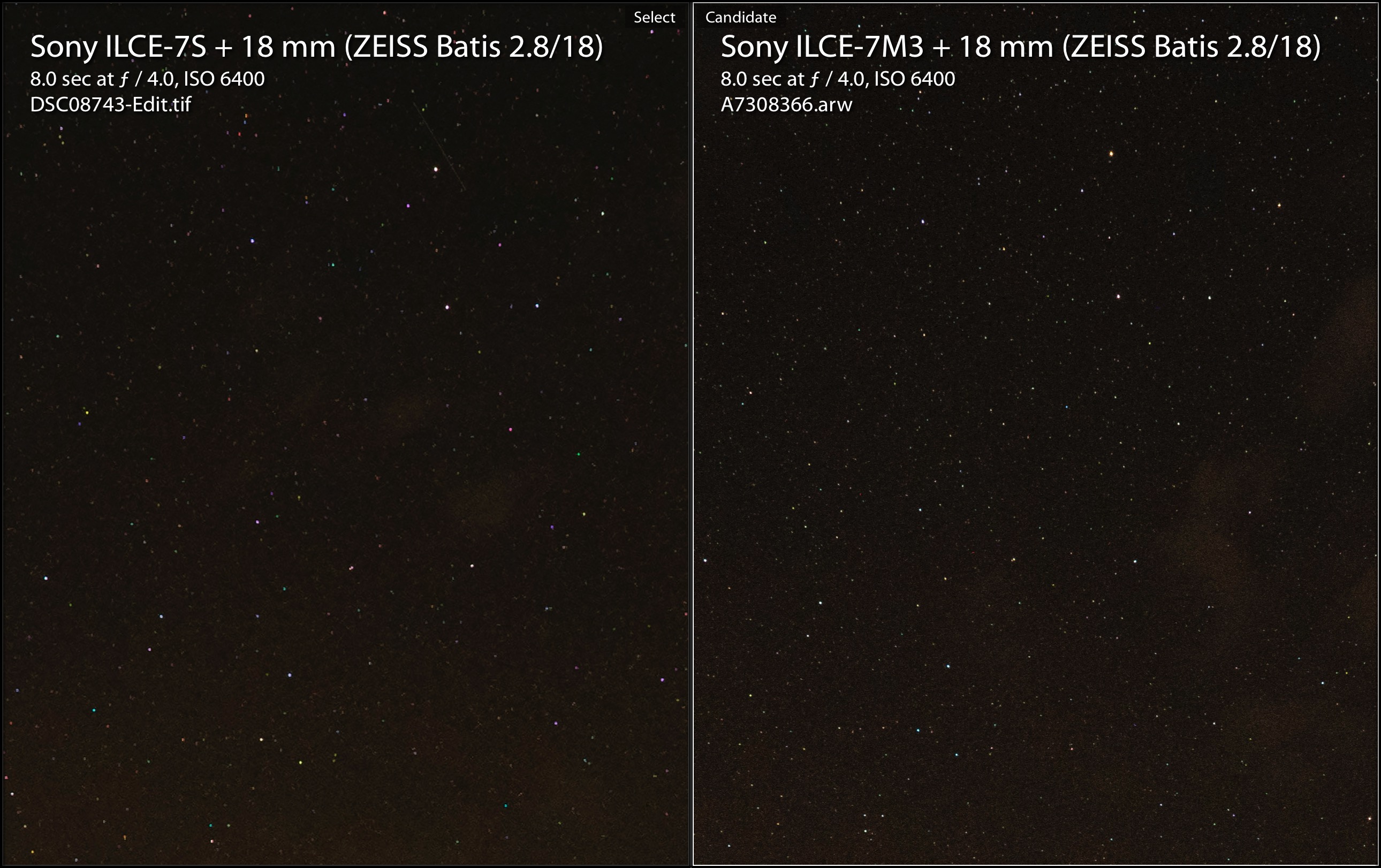
As you can see, the 8s a7III (right) shot looks a lot better than the star-eaten a7S Bulb shot (left). The a7S Bulb shot (left) shows some weird color shifted or blocky looking stars that appear a little bit defocused as a results of the old a7S’s spatial filtering (star-eater) in Bulb mode. The a7III shot shows more dim stars and stars appear markedly sharper than in the old a7S Bulb shot. Stars look “normal” in the a7III shot. This result is great news for astrophotographers looking to get the a7III.
If we compare details from that same 8s image from the a7III with an 8s non-star-eater (camera-timed) image from the a7S, differences become significantly less noticeable. The a7S image was scaled to match for comparison purposes.
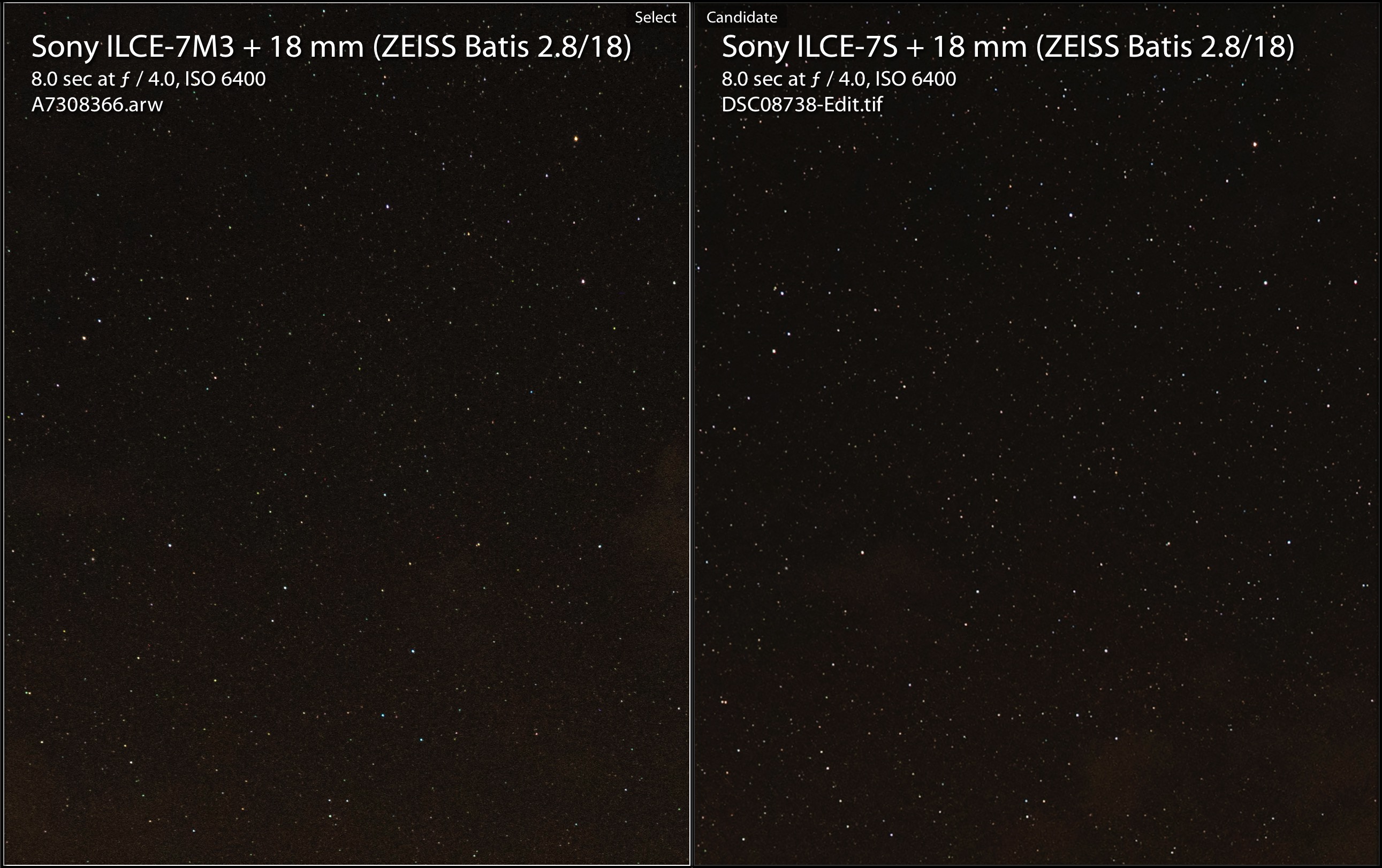
Here, both the a7III (left) and a7S (right) seem to be on par with each other in this direct 8S exposure comparison. The frequency and sharpness of stars look pretty much the same between both images. Upon very close inspection, I’d probably give the original a7S a very slight advantage in terms of noise but both cameras seem to do a good job at resolving fine stars.
So, there’s still some noise filtering in the Sony a7III, but in practice, it’s much improved from previous generations. Sony has obviously tweaked their noise algorithm a bit and the result is much more acceptable for typical night photography exposures. The a7III’s higher resolution sensor, when compared to the a7S probably also helps here. While star-eater is improved, it doesn’t hide the fact that the Sony is still doing some funky stuff to the a7III long exposure RAWs.
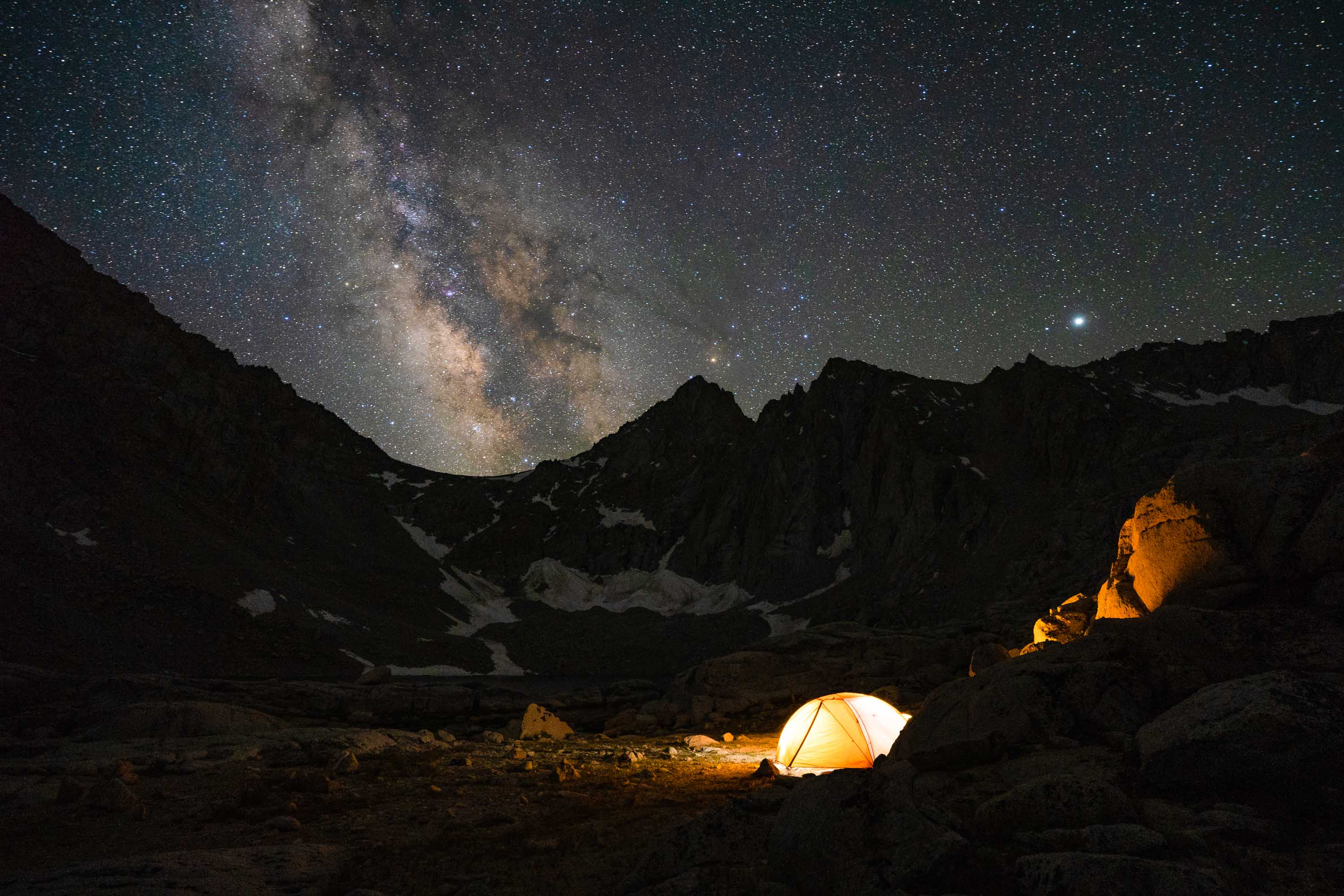
We wish that Sony did not apply a noise reduction algorithm as such to the a7III’s RAW files. RAW should be raw, unfiltered and un-baked. Ultimately, however, we really love most of the astrophotos that we’ve made from the a7III and we think that they speak for themselves.
References
For reference, here are a number of online sources that discuss the “Star Eater” problem:
DPReview:
https://www.dpreview.com/forums/post/58709160
https://www.dpreview.com/forums/post/55841466
Cloudy Nights:
https://www.cloudynights.com/topic/498339-sony-a7s-star-eater-algorithm/
https://www.cloudynights.com/topic/505754-another-real-world-example-of-sonys-star-eater-problem/
https://www.cloudynights.com/topic/558230-star-eater-in-action-sony-a7rii/
SAR:
http://www.sonyalpharumors.com/specific-a7sii-astrophotography-fix-request/#disqus_thread
Sony Community:
https://community.sony.com/t5/Alpha-NEX-Cameras/Star-eater-in-bulb-mode/td-p/508740
From Jim Kasson:
http://blog.kasson.com/the-last-word/spacial-filtering-of-raw-images-by-sony-a7s-a7ii/
http://blog.kasson.com/the-last-word/sony-a7rii-long-exposure-spatial-filtering-with-fw-3-30/
http://blog.kasson.com/the-last-word/16486/
http://blog.kasson.com/the-last-word/lenr-and-sony-a7rii-fw-3-30-lowpass-filteering/
http://blog.kasson.com/the-last-word/reverse-engineering-the-sony-a7rii-long-exposure-spatial-filtering/
http://blog.kasson.com/the-last-word/sony-a7rii-bulb-spatial-filtering/
Jim Kasson has written about a possible workaround on the a7RII by using “Continuous High or Continuous Low” modes.
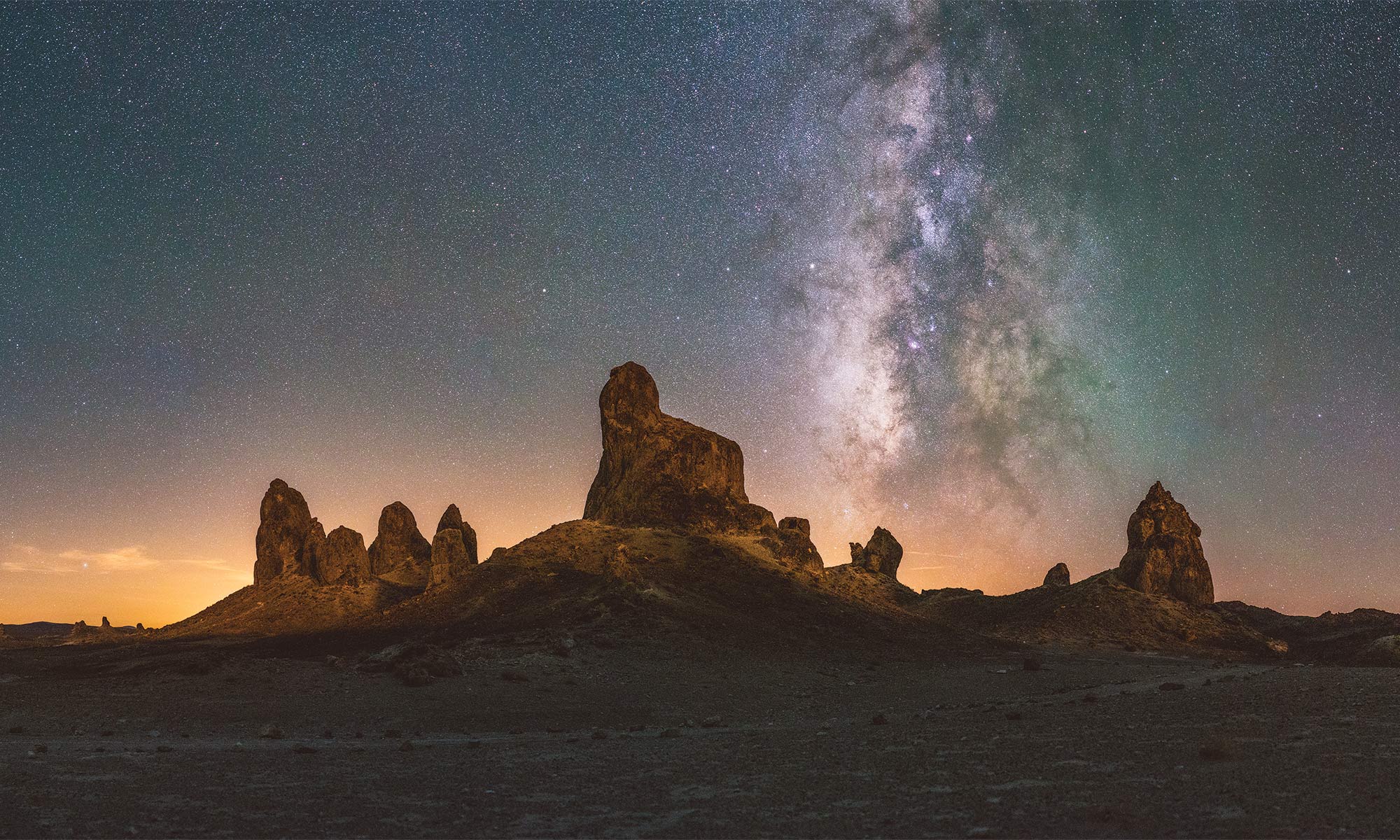
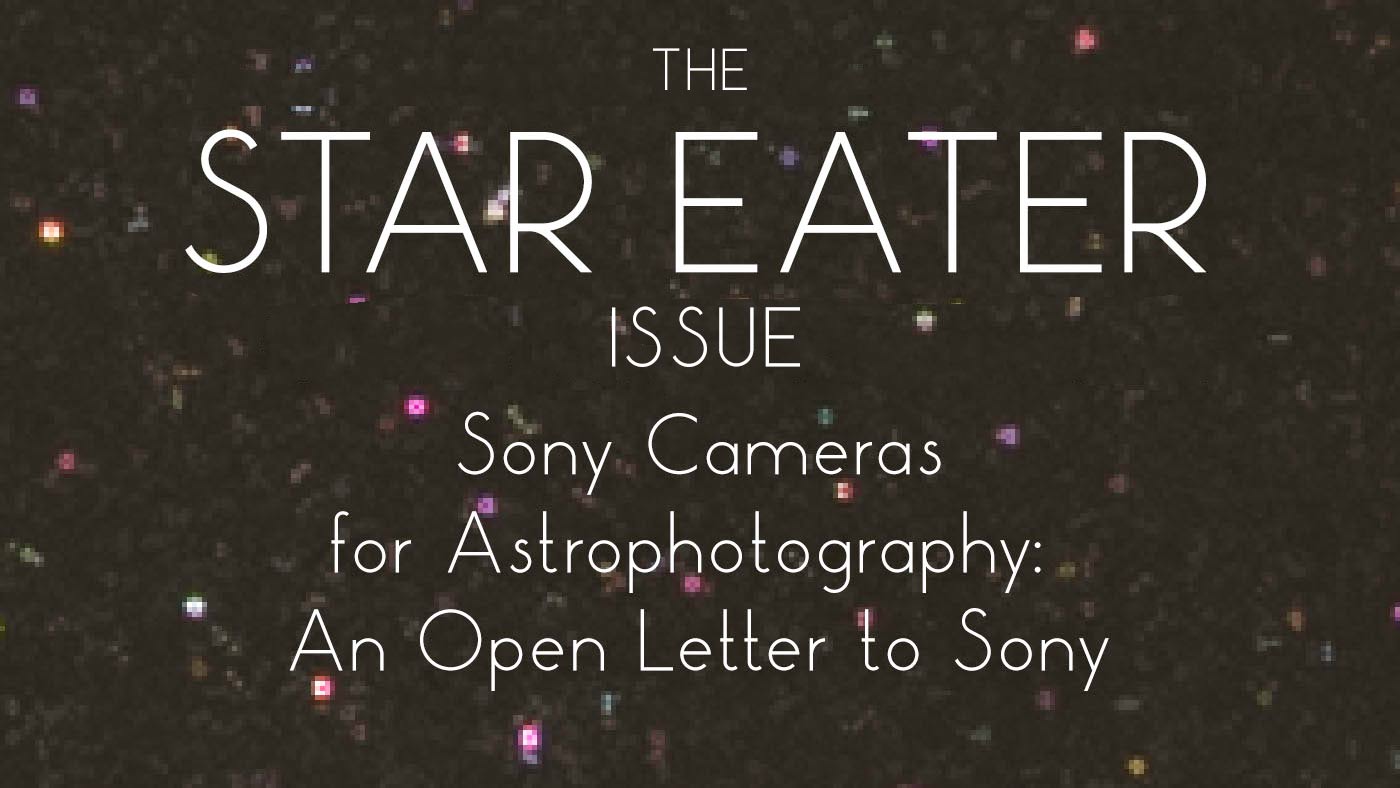
Ian,
We need some organized method of contacting Sony. Any suggestions from ambassadorson a polite, effective method of letting Sony know from their customer base.
Thankfully I did my massive astrophotography project in August 2015 when a brand spanking new A7rii, A7s and A7 and not shot much since but have a fall shoot planned and like to see new firmware release by summer.
I have received some initial contact from Sony Pro Support but no official word from higher up or if a fix will be made. I think the best we can do at the moment is to continue to email [email protected]
Re my previous post. I errantly stated that the new Sony A7S I just purchased had firmware 3.30 installed. Not so! It came with ver 3.20, which according to Sony was released in July 2016. I wonder if this 3.20 version has the same destructive quality (i.e.. star destruction when any exposure over 3.2 secs or bulb is utilized) as the 3.30 ver. for the A7R M2 and the 2.10 ver. for A7S M2. I believe those versions were released the same time, July 2016.
I am now holding back on return of this camera until I can ascertain if this firmware upgrade is as destructive as the well-known problems we’ve heard about the upgrades on the A7R m2 and A7S m2. Anyone out there no the answer?
I have firmware 3.20 on my a7S and it does not exhibit Star Eater in normal camera timed exposures in M and S modes. Your OK on that camera up to 30s.
However, switching to Bulb exposures on the a7S activates the Star Eater filtering. If you’re not planning to use Bulb, sticking with exposure times of 30s or less should be OK.
I have an A7ii. It has the latest firmware update. Does that mean it’s affected in all modes (bulb and normal shutter speed choices) above the 3.2 second threshold? I’m a little confused as to what models/firmwares are affected.
I am actually not sure how severely the a7II is affected. I have seen confirmation that it affects the a7RII and a7SII but I’m not sure about the a7II at the moment.
A louder cry for ‘open source’ / SDK / API / community level support hasn’t been heard before now…. this is a grave mistake by the sony Software team. Unfortunately, Sony has been incredibly lame at providing viable updates, and now we have updates that break features (anyone ever have a ps3 with linux on it?)
I couldn’t agree with you more on how disappoint this is.
Maybe Sony can save some face and include the community in future development. Make the software open source, provide us an SDK / API to work with. We all know the possibilities of our cameras aren’t fully realized by the software they provide. Custom firmware would be extend the life of our bodies!
There already is an Open Source SDK & API for installing firmware & apps and things on Sony cameras. Here is the main link to it: https://github.com/ma1co/Sony-PMCA-RE
Also here is an app that can be installed that opens up the 15k settings in the camera. I have put in a request to find the one that turns on this idiotic filter and allow us to disable it. https://github.com/ma1co/OpenMemories-Tweak
BIG WARNING: Do not use this stuff unless you know what you are doing. You can brick your camera. Also note the setting hasn’t been found yet.
Hi Ian
Thanks for posting your update on the Star Eater issue, I was in the process of changing from Nikon to Sony, but will now await the outcome before buying another Camera Body for Astrophotography.
Thanks David. I’m hoping for the best from Sony on this issue and hope to update this article if they issue a fix. Let’s hope it’s soon.
Hi Ian
Do you have a number for the UK? and I will try contacting Sony at our part of the Globe, also have you thought of raising it on Social media as this avenue seems to get results when poeple complain.
Davy
Hello Ian,
I was saving up for a Sony after getting hooked on astrophotography in nothern Europe this last Christmas using my Fuji x100t to the best of its abilities.
I’ve Should I now just go with something that is familiar and get a x-T2? Or bite the bullet and venture once again into the DSLR space and get a Nikon (sold my d7000 and gear) with the trade off of the size.
Thanks,
Stu